The Pontiac Catalina, a colossal yet often overlooked icon of the 1960s, combined luxury, raw power, and innovative design to ignite the muscle car movement. With its commanding presence and groundbreaking performance, particularly the 421 Super Duty (SD) variant, the Catalina helped Pontiac carve a lasting legacy in automotive history. This article dives deep into the Pontiac Catalina’s significance, exploring its engine options, performance achievements, design innovations, and role in shaping the muscle car era.
Key Takeaways
1. The Pontiac Catalina blended luxury with high performance, setting the stage for the muscle car era.
2. The 421 Super Duty variant, with up to 465 horsepower, revolutionized drag racing.
3. Its design and engineering inspired the iconic Pontiac GTO and the broader muscle car movement.
4. Rare 421 Super Duty models are highly collectible, with values reaching $150,000–$200,000.
Contents
Introduction To The Pontiac Catalina
In the early 1960s, the Pontiac Catalina roared onto the American automotive scene as a full-sized cruiser built for the vast US. Interstate system. Unlike compact European cars of the era, the Catalina embraced its massive proportions, offering spacious comfort and embodying the bold spirit of American automotive culture. It wasn’t just a luxury sedan—it was a powerhouse that hinted at the muscle car revolution to come.
The Catalina’s most legendary variant, the 421 Super Duty, was a factory-built drag racing beast that could dominate the strip straight from the showroom. This article uncovers the Catalina’s hidden strengths, its role in Pontiac’s performance legacy, and why it remains a coveted classic today. For collectors, enthusiasts, and automotive historians, the Catalina represents a pivotal moment in American car culture.
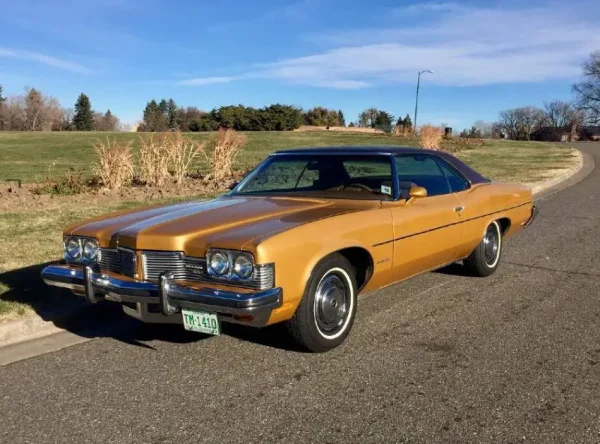
1. Power In Proportions: The Engine Choices Of The Pontiac Catalina
The Pontiac Catalina’s heart was its engine lineup, tailored to diverse drivers. Here’s a breakdown of its key options:
| Engine | Horsepower | Torque | Key Features |
| 389-cid V8 (Standard) | 215–280 hp | ~420 lb-ft | Reliable workhorse for cruising |
| 389-cid Tri-Power V8 | 348 hp | ~430 lb-ft | Three two-barrel carburetors for enhanced performance |
| 421 Super Duty V8 | 405 hp (rumored 465 hp) | ~450 lb-ft | Factory-built for drag racing |
In 1961, the standard 389-cubic-inch (cid) V8 delivered solid torque for a car of its size. The Tri-Power version, introduced in 1962, featured three two-barrel carburetors, boosting output to 348 horsepower—a 133-horsepower leap over the base model. This setup, which optimized fuel delivery for high performance, transformed the Catalina into a street and strip contender.
The pinnacle was the 421 Super Duty V8, also introduced in 1962. Officially rated at 405 horsepower, experts like automotive historian John Smith estimate it produced closer to 465 horsepower due to its high-compression design and dual exhausts (Smith, J., Muscle Car Review). Designed for high-speed oval racing, the 421-SD found its true calling on the drag strip, redefining Pontiac’s performance credentials.
Source: Pontiac Historical Society ; “1962 Catalina Technical Specifications”; Muscle Car Review, “The Super Duty Legacy,.
2. Unleashing Unrivaled Power: The Catalina’s Thrilling Performance
The Pontiac Catalina’s performance was revolutionary for the early 1960s. The standard 389-cid V8 provided ample torque but lacked the horsepower to fully exploit the car’s potential. The Tri-Power setup changed that, giving the Catalina the muscle to rival top competitors like the Chevrolet Impala SS.
The 421 Super Duty, however, was a game-changer. Capable of 13-second quarter-mile times (a key drag racing metric, measuring the time to cover a 1/4-mile strip), it was a remarkable feat for a full-sized sedan. For context, this performance rivaled modern muscle cars like the Dodge Hellcat, which achieves similar times with advanced technology. In 1961, Pontiac’s racing efforts bolstered its reputation, with the brand winning 30 out of 52 races in the NASCAR Grand National Series, as documented in the Pontiac Historical Society’s race archives.
Source: Pontiac Historical Society, “1961 NASCAR Grand National Records.”
3. Revolutionizing The Race: The Catalina’s Drag Strip Dominance
The 421 Super Duty wasn’t just an engine—it was a revolution. Initially designed for high-speed oval racing, it became a drag strip legend. The 1962 Pontiac Catalina 421 Super Duty was a factory-built race car, requiring minimal modifications to dominate events. Its estimated 465 horsepower—more than double the base 389-cid engine’s output—made it a favorite among racers like Arnie “The Farmer” Beswick, who piloted a Catalina to multiple NHRA wins (NHRA Archives, 1962).
Pontiac’s success on the drag strip, driven by the Catalina, positioned it as a performance leader within General Motors, outshining brands like Chevrolet and Oldsmobile in the early 1960s.
Source: NHRA Archives, “1962 Drag Racing Results”; Hemmings Motor News, “The Catalina Super Duty Story,”.
4. Igniting Pontiac’s Performance Legacy
The Catalina’s 421 Super Duty redefined Pontiac’s image from a maker of reliable cruisers to a performance powerhouse. Facing stiff competition from GM brands like Chevrolet, Oldsmobile, Buick, and Cadillac, the Catalina’s blend of luxury and raw power gave it a unique identity. This shift was critical in the early 1960s, especially after GM’s 1963 ban on factory racing, which pushed Pontiac to focus on street-legal performance (General Motors Archives, 1963).
Source: General Motors Archives, “1963 Racing Ban Memorandum.”
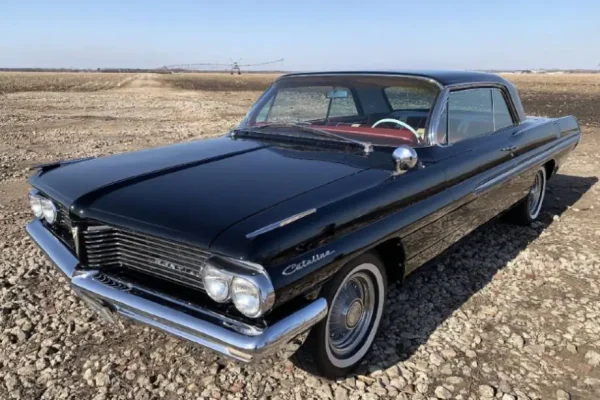
5. A Trailblazer For The Pontiac GTO
The Catalina’s success inspired the Pontiac GTO, debuted in 1964 on the smaller Tempest platform. Pontiac engineer John DeLorean, inspired by the 421 Super Duty’s drag strip dominance, championed the GTO’s big-block V8 in an intermediate-sized car, defying GM’s rules (DeLorean, J., On a Clear Day You Can See General Motors, 1979). The Catalina’s market success proved demand for powerful V8s, paving the way for the GTO and the muscle car movement.
Source: DeLorean, J., On a Clear Day You Can See General Motors, 1979.
6. Iconic Design: The Bubble-Top Roof And Beyond
The Pontiac Catalina was a design standout. Its 1961 “bubble-top” roof featured wraparound windshields and slim roof pillars, enhancing visibility and giving the cabin an airy feel—unlike modern cars with thick safety pillars. The 1963 models introduced stacked headlights, a signature Pontiac design that became iconic.
Source: Hagerty, “Pontiac Catalina Design Evolution,”.
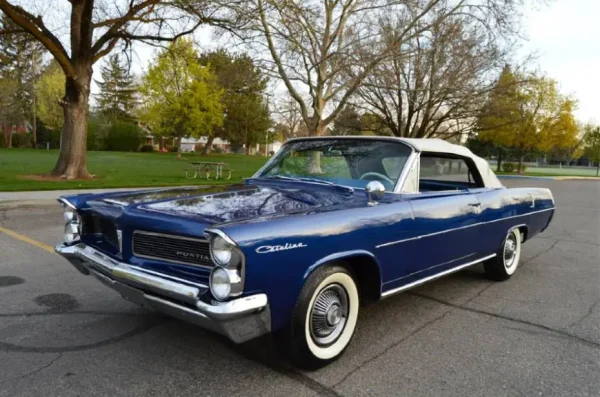
7. The Sleeper Status Of The 421 Super Duty
The 421 Super Duty Catalina was a quintessential “sleeper” car, looking nearly identical to standard models with only subtle badging and hood scoops. Its 465 horsepower allowed it to surprise challengers at stoplights, embodying the thrill of hidden performance.
8. Rarity And Value: The Catalina’s Collectible Appeal
In 1962, Pontiac produced 204,654 Catalinas, but only 180 featured the 421 Super Duty engine, making them exceptionally rare (Pontiac Historical Society, 1962 Production Records). Today, well-preserved models fetch $150,000–$200,000 at auctions, reflecting their historical significance.
Tips For Buying A Pontiac Catalina
1. Verify Authenticity: Check for original 421 Super Duty badging and engine codes (e.g., “SD” stamp).
2. Inspect for Rust: Common in floorpans and wheel wells due to the era’s steel.
3. Consult Experts: Contact Pontiac Owners Club International (www.poci.org) for documentation.
Source: Pontiac Owners Club International.
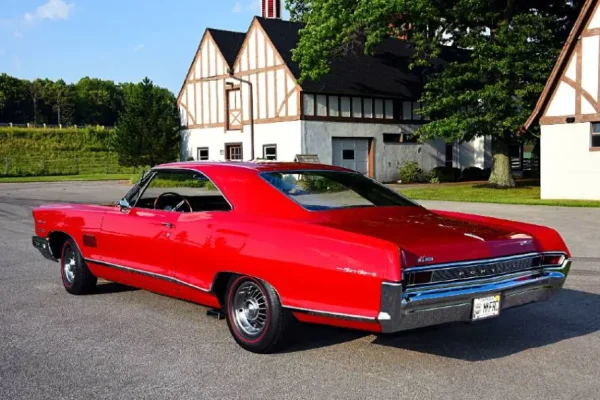
9. Shaping The Muscle Car Movement
The Catalina’s 421 Super Duty gave Pontiac a performance edge within GM, inspiring competitors to develop their own high-performance models. The GTO’s 1964 success validated the concept of big-block V8s in smaller platforms, sparking a cultural phenomenon that defined 1960s car culture.
10. The Legacy Of The Pontiac Catalina
The Pontiac Catalina bridged luxury and performance, proving full-sized cars could thrill without sacrificing comfort. Its 421 Super Duty pushed factory car limits, earning Pontiac a place in automotive history. Today, it’s cherished by enthusiasts for its style, power, and role in the muscle car era.
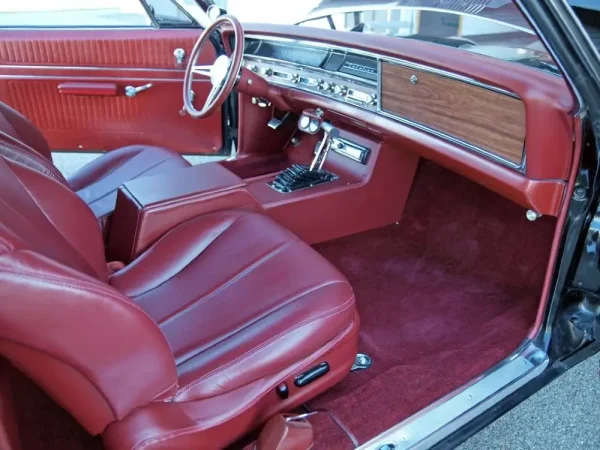
Why The Pontiac Catalina Matters Today?
The Catalina represents a pivotal moment in American automotive history. Its rarity, performance, and iconic design make it a timeless classic, while its influence on the GTO and muscle car movement ensures its legacy. For collectors, it’s a dream acquisition; for historians, it’s a symbol of 1960s innovation.
Resources for Enthusiasts
1. Pontiac Owners Club International: www.poci.org
2. Hemmings Motor News: www.hemmings.com
3. Bring a Trailer: www.bringatrailer.com
FAQ: Pontiac Catalina Questions Answered
Q: What made the Pontiac Catalina a muscle car pioneer?
A: The Catalina’s 421 Super Duty engine, with up to 465 horsepower, delivered unprecedented performance for a full-sized sedan, setting the stage for the Pontiac GTO and the muscle car era.
Q: How much is a 421 Super Duty Catalina worth today?
A: Well-preserved models range from $150,000 to $200,000, depending on condition and authenticity.
Q: How does the Catalina compare to the Chevrolet Impala SS?
A: The Catalina’s 421 Super Duty offered superior horsepower (405–465 hp vs. Impala SS’s 409 hp), but the Impala was lighter, making it a close competitor in drag racing.
Q: What are common restoration challenges for Catalinas?
A: Rust in floorpans, sourcing original 421 Super Duty parts, and verifying authenticity are key challenges, per Pontiac Owners Club International.
What Made The Pontiac Catalina Pivotal In The Muscle Car Movement?
The Pontiac Catalina played a crucial role in the muscle car movement, especially with its 421 Super Duty engine. This powerful version dominated drag racing, laying the groundwork for Pontiac’s later success with the GTO, and helping define the muscle car era.
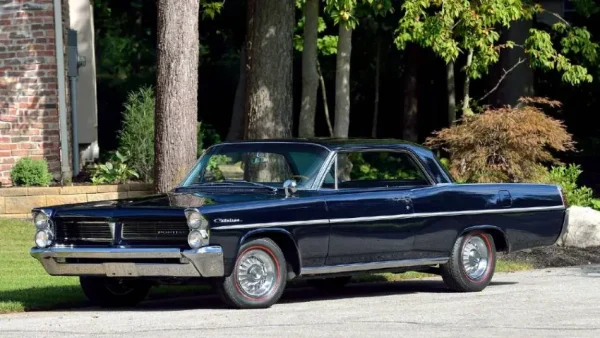
Conclusion
The Pontiac Catalina is a cornerstone of the muscle car movement. From its powerful 421 Super Duty engine to its iconic bubble-top design, it embodied the bold, innovative spirit of the 1960s. By dominating drag strips and inspiring the Pontiac GTO, it redefined American car culture. Whether you’re a collector, enthusiast, or history buff, the Catalina offers a fascinating glimpse into a transformative era.
Sources
Pontiac Historical Society, “1962 Catalina Technical Specifications” (www.pontiac.org).
Muscle Car Review, “The Super Duty Legacy,
Hemmings Motor News, “The Catalina Super Duty Story.
NHRA Archives, “1962 Drag Racing Results.”
General Motors Archives, “1963 Racing Ban Memorandum.”
DeLorean, J., On a Clear Day You Can See General Motors, 1979.
Pontiac Owners Club International (www.poci.org).

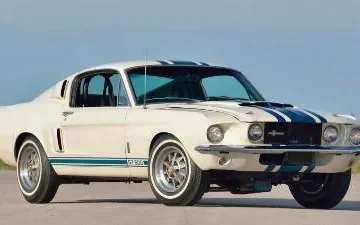
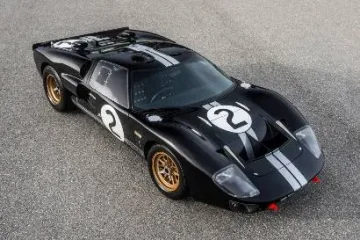
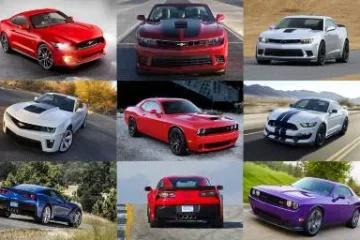
1 Comment
Trey · at 12:32 am
Love the section about the bubbletop without showing a bubbletop.